While it’s difficult, and sometimes outright impossible to control what toxins we are exposed to in the many different environments that we spend time in, there is fortunately a lot that we can do to limit the amount of potentially harmful chemicals we are surrounded by in our own homes.
In this informative article you’ll find out about the best houseplants for improving air quality indoors and many other simple and practical tips for reducing the amount of chemicals in specific areas of your house. From the kitchen and what you’re eating to the toxins you could be exposed to when sleeping, there’s loads of simple and practical suggestions to help you to create yourself a healthier, chemically stress-free home.
Create a Stress Free Home
The importance of using toxin-free materials at home has never been greater. The onset of the global pandemic brought chemicals found in our homes under the microscope. While traditional cleaners are shifting toward safer alternatives, we should examine the other stress-causing chemicals in our daily environment.
Read on to learn about the impact these chemicals can have on our bodies and how you can take steps to make your home chemically stress-free.
Natural Air and Plants
When it comes to cleansing the air in our homes, aerosol air fresheners, plug-ins, and scented candles have long been popular choices. While these options smell nice, they contain chemicals – such as VOCs (volatile organic compounds) – that negatively impact our health. VOCs are a family of industrial solvents, usually in air fresheners, aerosol sprays, cleaning, and building
supplies.
Exposure to these compounds has the following effects on humans:
Shortness of breath
Headaches
Dizziness
Skin problems
Nausea
Irritation in the eyes, nose, and throat
Fatigue
By choosing natural air freshening methods, you’ll reduce your exposure to these harmful compounds. One of the best ways to eliminate stale air and airborne toxins is by opening your windows and creating a cross-breeze that circulates the room. Another way to improve the air quality in your home is to keep houseplants around. All plants produce oxygen, but some – such as the following – are better at natural air freshening than others:
Barberton Daisy
English Ivy
Snake Plant / Mother-in-Law’s Tongue
Chrysanthemum
Spider Plant
Aloe Vera
Broad Lady Palm
Peace Lilly
Red-Edged Dracaena/Dragon Tree
Weeping Fig
Chinese Evergreen
Many houseplants are easy to care for, so keeping a few in your home won’t take much effort on your part.
Toxin-Free Bedroom
The bedroom should be a place of refuge, but your furnishings can cause an allergic reaction. Fortunately, there are some easy ways to control the number of toxins in your bedroom.
What’s in your mattress?
Your mattress introduces two main areas of concern: what it’s made of, and what’s in it.
First, it’s best to consider buying a mattress made of dense or natural materials since traditional mattresses are a hotspot for bacteria. By switching to natural latex, bamboo, coconut coir, or another natural material, you’ll significantly reduce the risk of an allergic reaction. The second area of concern involves the presence of dust mites. Mites are an unfortunate part of owning soft furniture since they love the skin flakes people shed. They can provoke allergic reactions like shortness of breath, nasal irritation, and skin sensitivity. Fortunately, by using a mite-proof mattress and pillow covers and washing your bedding regularly, you can curb the dust mites in the bedroom.
The best bedding
There are plenty of natural alternatives to bedding made with synthetic, chemical-treated materials. An essential characteristic of hygienic bedding is that it is breathable. Natural fibers, like cotton, bamboo, linen, silk, and wool, offer superior breathability without uncomfortable static electricity or skin sensitivity.
Furnishing health
The furniture in your bedroom, outside your mattress, is a not-so-obvious source of chemical toxins. There are chemical toxins found in your curtains, the paint on your bookshelf, the plywood backing on your dresser, and the stain-resistant treatment on your chair. Avoiding plastics is especially crucial to creating a healthy bedroom.
You can avoid bringing extra toxins into your bedroom by choosing furnishings made from these materials…
Glass
Ceramic
Metal, including stainless steel
Natural wood or bamboo
… instead of these materials:
Pressboard, including chipboard, plywood and MDF
Foam-stuffed furniture
Furniture upholstered with moth-, fire-, or stain-resistant treatments.
Furniture made using PVC/vinyl
Natural materials anywhere in the home are more expensive than furnishings made with synthetic materials. Protecting your health in the long term far outweighs the price.
Toxin-Free Kitchen
A big part of maintaining chemical stress-free health is how you eat and cook. It goes without saying that highly processed foods have plenty of added sugars, preservatives, stabilizers, artificial flavoring, dyes, and so on. The basic ingredients we cook with – that is, the fruit, vegetables, nuts, meats, and dairy in our diet – can contain mercury, fertilizer, growth
hormones, insecticides, and antibiotics.
Organic eating is one way you can improve the overall quality of the basic ingredients you’re cooking with. By choosing organically grown or raised foods, you take a huge step toward ruling out synthetic pesticides and fertilizers, plus the other chemicals to make our food look or smell better, last longer, or grow bigger. It may be tempting to think that farmed fish are mercury-free, but since farmed fish are still raised in – or very near – the ocean, mercury can leech into their water. Additionally, farmed fish are given fish meal, which is made from scraps that have been processed for human or pet consumption. So, fish farms get their mercury content from two sources, not to mention the polluted run-off water that flows through the farm from inland.
While it may not be possible to edit all the chemical toxins from your diet, there are ways to
mitigate it:
Organic eating
Don’t use Teflon-coated cookware (Teflon contains PFOA — they often cause kidney and liver diseases, infertility, and thyroid disorders, among other things).
Avoid canned/preserved food unless you canned/preserved it yourself.
When possible, avoid convenience foods. And do not heat food in plastic in the microwave, or avoid the microwave altogether.
Toxin-Free Cleaning
Standard household cleaners can irritate the eyes, skin, and lungs, cause burns and rashes,
and much more. Fortunately, natural cleaning is not only a cinch but also much cheaper. All you
need to be a natural cleaning whiz is a little know-how.
Below, you’ll find a few handy natural cleaners to replace those harsh chemicals.
Double Strength White Cleaning Vinegar. Used by itself or with water, this basic cleaner is an excellent degreaser and general cleaner for hard surfaces and windows.
Premium Baking Soda. Baking soda is a great scrubbing agent for scratch-proof surfaces with tough grime. It can also work in place of dish soap, with extra rinsing.
Green Goddess makes a range of totally natural cleaners, check them out here.
Salt. Like baking soda, salt is good for scrubbing tough grime when liberally applied to a sponge.
Hot Water. Applying hot water to hardened dirt, and allowing it to sit for 10 minutes, will soften the dirt. You can also fill a mug with water and heat it in your microwave to soften food residue and easily wipe it away.
Towels. Aside from using them to wipe things dry, you can put a few drops of your favourite essential oil on a towel and throw them in the dryer in place of dryer sheets.
Toxin-Free Bathroom and Hygiene
The bathroom, and your hygiene routine, also hide their share of chemical toxins. Aside from the range of cleaners stashed away under the sink or in the cupboard, consider what you likely have in the bathroom, things like toothpaste, hand soap, skin care products, perfumes/colognes/aftershaves, shampoo and conditioner, bath soap or shower gel, toilet paper, plastic shower curtain, towels and bathmats.
Each of these things have better alternatives. Natural, organic bath, dental, and skin care options are available at your local pharmacy, natural health shop, or online. Toilet paper comes in chemical-free varieties that use a large proportion of recycled paper. As with your bedding, you can purchase towels, bathmats, and shower curtains in natural materials like bamboo or cotton. The possibilities for ridding your bathroom of unnecessary chemicals are not only easy, but the choices are nearly endless.
Toxin-Free Kids Bedroom
Though last on our list, the kids’ bedroom is arguably essential to detoxify. Aside from bedding and furnishings, a child’s room poses a few additional challenges concerning their extra belongings. Depending on your child’s age, you may have play mats on the floor, plastic play furniture, plastic toys, easy-wipe vinyl changing pads, vinyl-covered baby mattresses, and so forth. Their bedding and mattresses are easy to replace, following the same example you set in your room.
The plastic and vinyl items may be a little more challenging to replace. You’ll need to find natural materials that are just as easy to maintain and can take a beating. Replacing synthetic play mats with natural rubber is easy, or simply use an untreated rug or carpet made from a natural material. When it comes to the health of your child, toxin-free materials for an eco-friendly baby nursery are always best.
It’s also important to use natural baby products for your little one, Green Goddess has a good selection, check out the range here.
Conclusion
A home is supposed to be a refuge, but if it’s filled with chemicals causing health problems for you and your loved ones, it becomes a source of stress and unhappiness. By creating a chemical stress-free home, you’re taking positive steps forward for the well-being of the entire household. Those steps don’t have to be drastic, and they don’t have to cost a ton of money to achieve the desired result. What matters here is your health.
Originally posted on Porch.com



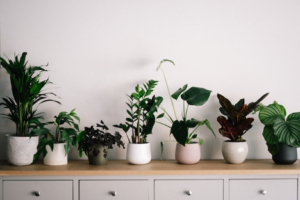

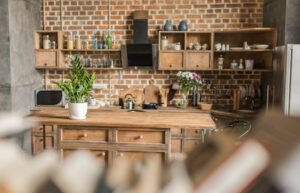
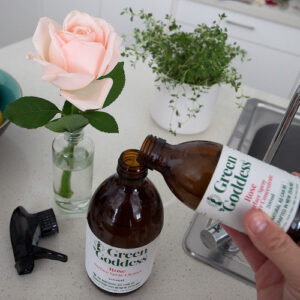

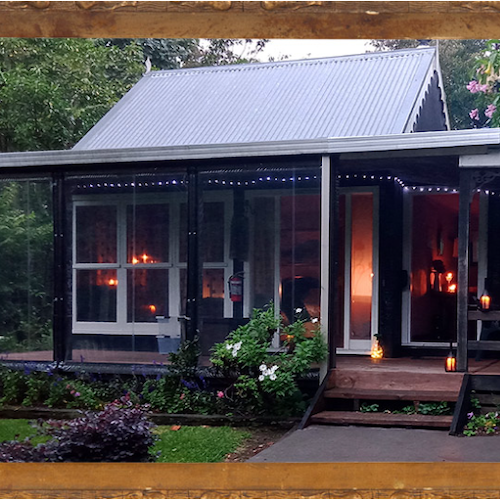
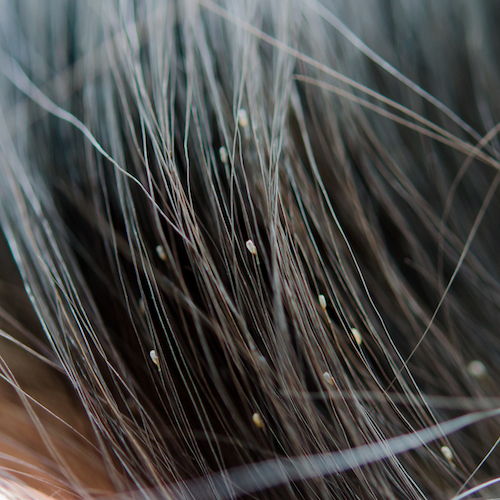

About The Author: Katie Brooks
More posts by Katie Brooks